How Jack’s Camp kept its cool
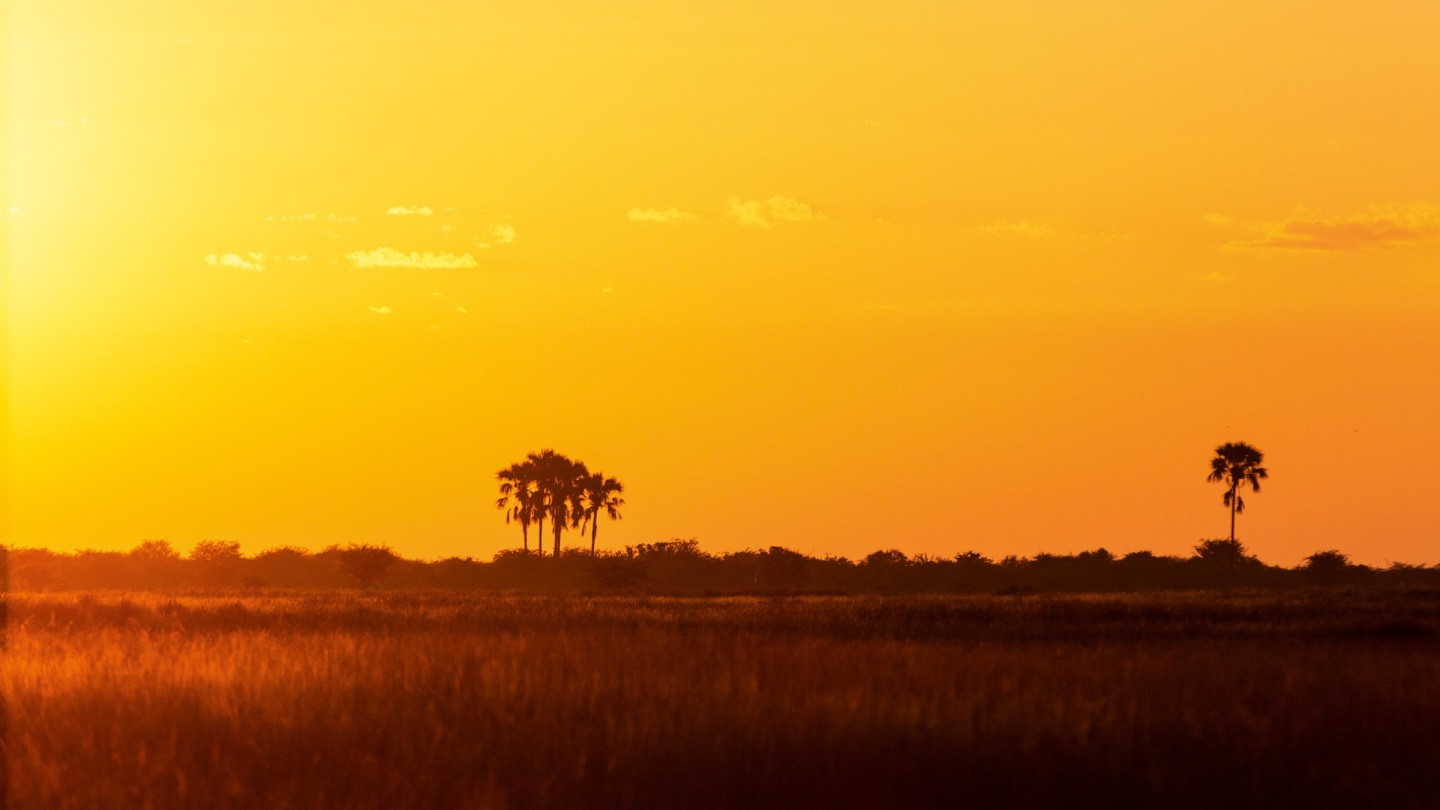
Roula Khalaf, Editor of the FT, selects her favourite stories in this weekly newsletter.
After two attempts to scare the zebra off the runway we give up and land the little plane on the foreshortened strip of sand left to us. No point being miffed. They got here first, and vastly outnumber us besides. It’s the annual zebra migration in the Kalahari and tens of thousands have made the journey north to south. Theirs began weeks ago; ours at dawn in a Mokoro, following hippo bubbles through the lagoon in Mapula, Botswana. But for the past hour, we have been flying a route broadly similar to the one they must have taken. Under the shadow of the wing, the capillaries of the Okavango Delta flow around termite islets in a lava lamp of iridescent emeralds and blues. Then comes the gold of riparian woodland before Africa’s immense savannah gives way to the chalky lunar scape of the Makgadikgadi salt pans.
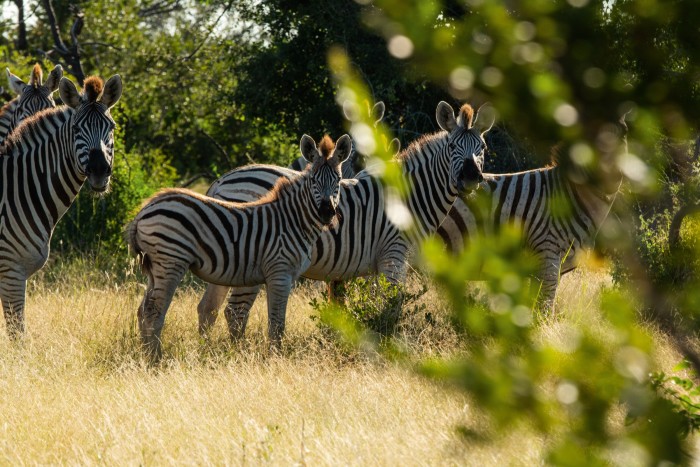
Even after a couple of months here, the colours of Africa seem trippy. London lockdown: a time warp of grey pavement and black garbage bags. A city marinated in dismal. To be in Africa at all has a pinch-me, dream-like quality to it. I came originally on assignment, but sad and unsettled by the loss of my parents, I stayed – pushed my feet into the soil and felt grounded for the first time in a long while. Covid-19 has temporarily burnt through southern Africa and moved north. Though when I make my journey, road travel is restricted and there are only two flights to Maun per week; daily flights have now returned. Fleets of tiny planes make targeted drops to even the most isolated parts of the bush. It is a rare and beautiful moment. The camps are largely open, the country tantalisingly empty.
Super, my guide, scoops me up, and before long we’re trundling through the hot, windy afternoon; past ostrich, past wildebeest, past a secretary bird, bureaucratically tidy in its feathery grey tailcoat. In our periphery are flashes of yellow and turquoise as bee-eaters zig-zag alongside the Jeep, catching grasshoppers thrown up by the wheels. It’s the end of the rainy season, and life is at peak bounty. Still, the dry months are coming. By September the Makgadikgadi will return to the Badlands of hard-baked desert, beguiling and impossible. But now, rising out of the shimmer, something incongruous: a languid copse of palm trees framing what could almost be the domes of an Arabian city. If, broken by thirst, on the foothills of death, you were to see such an oasis, chances are you’d dismiss it as a mirage and draw your last gasp never knowing you were within a mile of one of Africa’s grandest man-made waterholes.
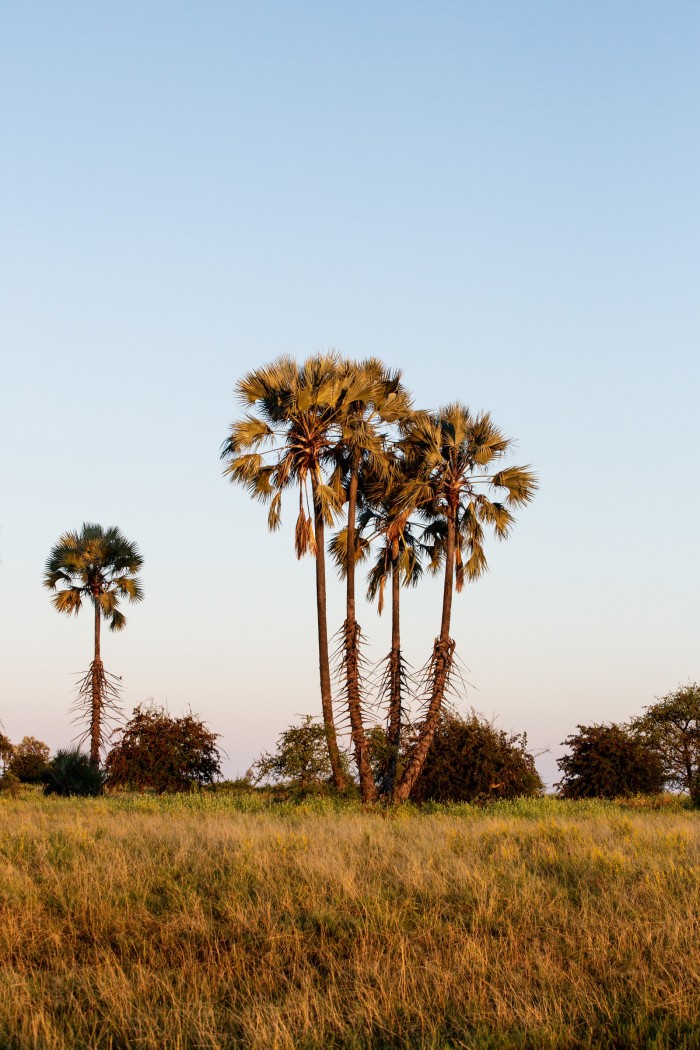
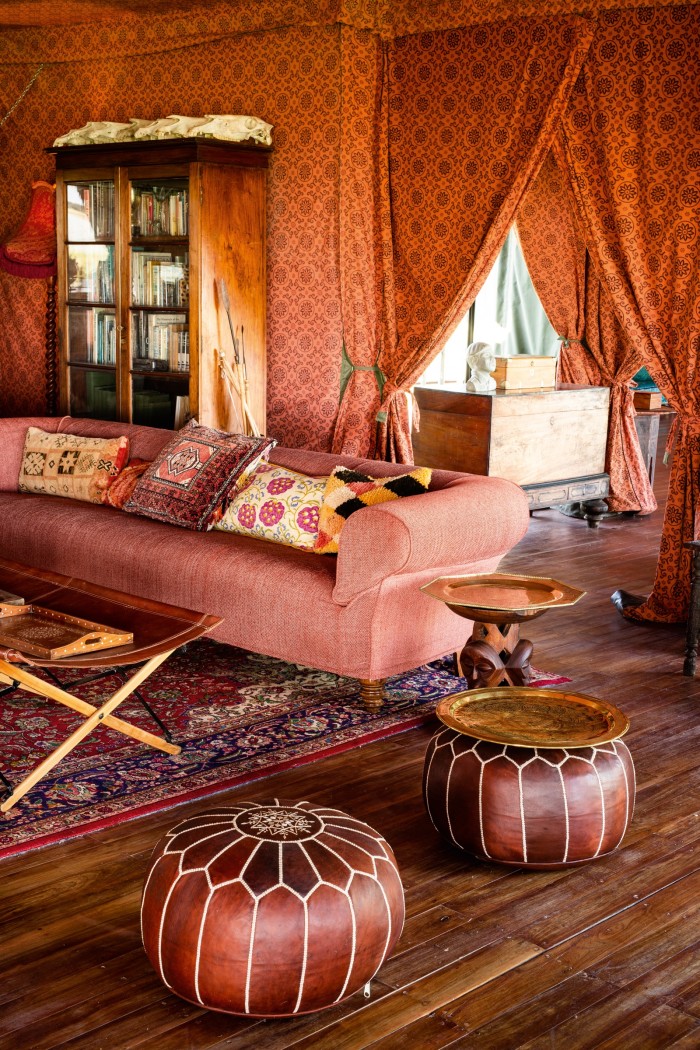
I first heard about Jack’s Camp 10 years ago, and have wanted to go ever since. Much has been written about the eponymous Jack Bousfield: scourge of the crocodile, naturalist, raconteur and all-round legend. Bousfield was a fourth-generation hunter-explorer from a family for whom pushing boundaries appeared to be a competitive sport. When in the early ’60s he narrowed a flinty eye at the Kalahari and asked what was out there, he was told, “Nothing. Only an idiot would go.”
When Bousfield first made camp here, it was a pared-down affair: a rusting shower set within a stockade of sharpened sticks; a privy in the scuttle of the bush. Bousfield loved the Kalahari for its isolation, its creatures and people. This was where he raised his son, Ralph, who on his father’s death in 1992 pivoted the place from home into a commercial business. Since then, it’s undergone a number of overhauls; Ralph has learnt the hard way (and out here there is only the hard way) what works and what doesn’t. “Sure, the inaccessibility makes it a logistical challenge,” he shrugs, “but our family have always sought places where not many other people are.”
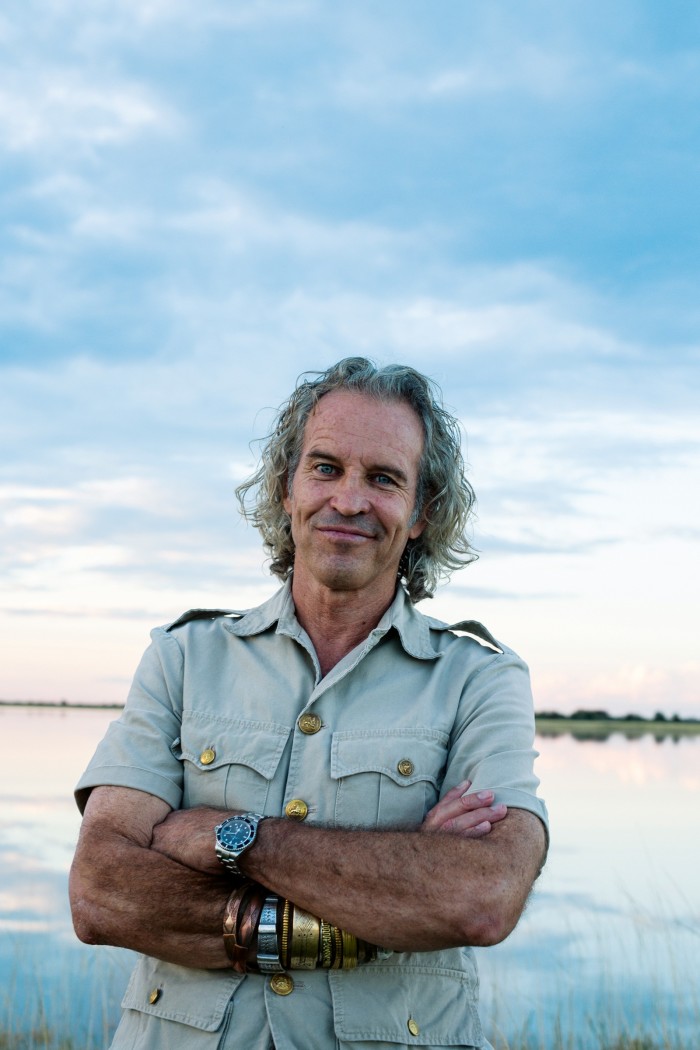
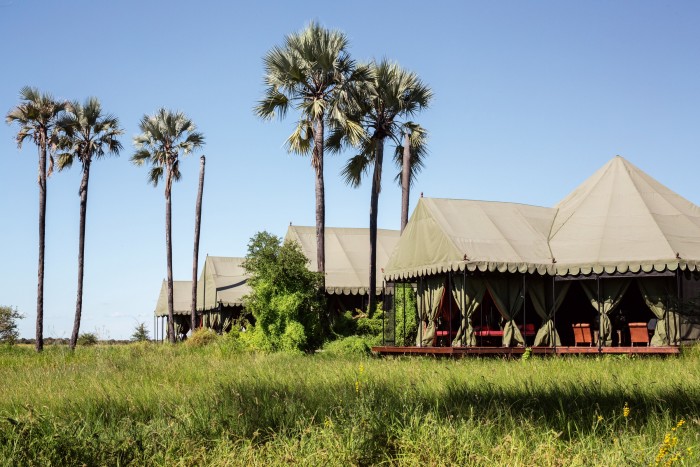
Close up, the camp presents somewhere on the continuum between Moorish palace and Temple of Archaeology: four vast green pavilions, lined in amber Indian stamp-print, their inner chambers of living room, tea tent and library flowing one into the other in a dazzle of ochre and rose velvet. Tent flaps are tied back, creating a series of lobed arches onto the immediate landscape. In any normal year, this would be a wide stretch of salt pans, but Botswana has had more than three times its annual rainfall and instead of the psoriasis crust of clay, a pale blue lake glitters, flanked by a Vegas troupe of exotic birds. There are whistling duck with butterscotch breasts, blacksmith plover and a scrofulous Marabou stork, croaking through its pendular throat. As we sink back against big floor cushions with cucumber sandwiches, 30 or so critically endangered wattled cranes wing elegantly by.
Thanks to the cumulative swag of the family’s obsession with the natural world, Jack’s Camp has been designated one of Botswana’s official museums. On every table, behind every cabinet, are Stone Age tools, bones, maps, artefacts and fossils. From its crenellated top to its Persian rugged toe, the place is splendid. So why the latest gussy-up? “As demand and sophistication grow in the industry,” Ralph says, “it’s inevitable that the business of tourism becomes something of an arms race. The camp has always been imaginative, but never wholly comfortable.”
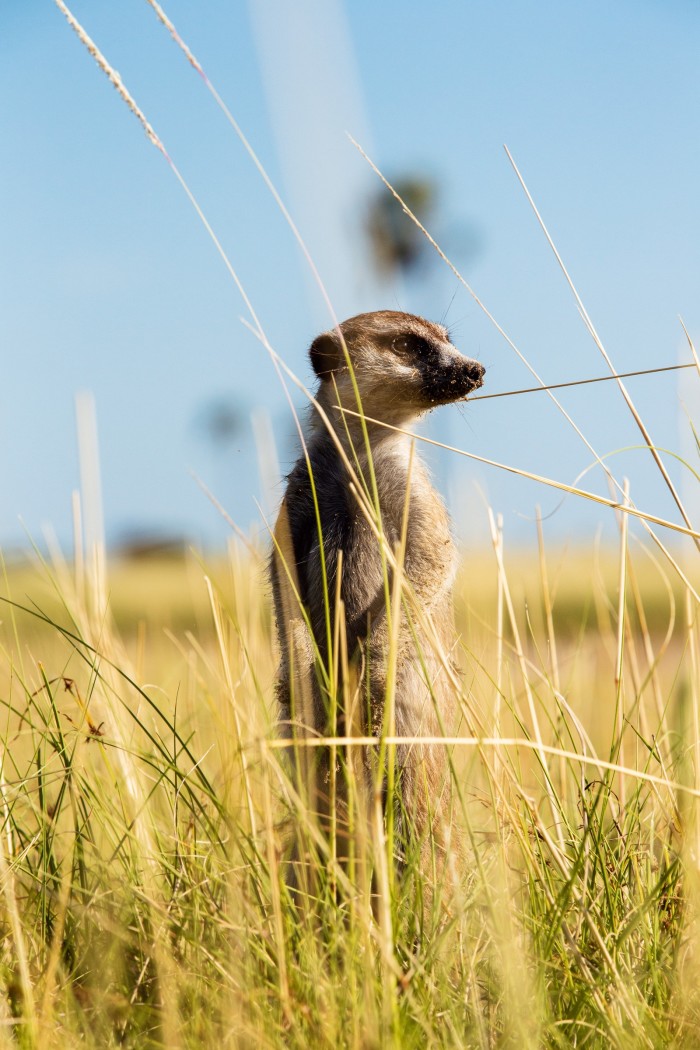
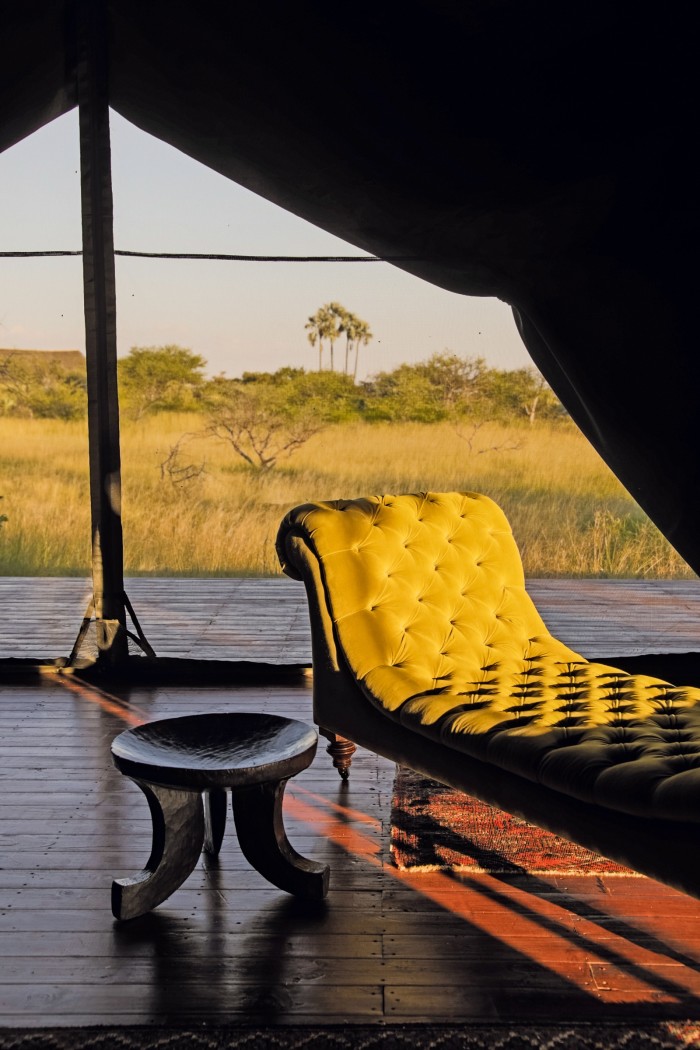
Bousfield’s new partners, the safari operators Natural Selection, were founded by a bunch of wild ex-bush guys who, like Ralph, were at the coalface of guiding and are passionate about the environment. The wormhole of the pandemic opened up time and space to rebuild the camp, peg to pole, with a view to achieving a five-star low-carbon footprint. This they’ve done by merging the tenets of traditional Middle Eastern desert architecture with state-of-the-art technology. The five-layered canvas, originally developed for Nato, is fire-proof and heat-resistant. Palatial sleeping tents, along a track blooming with hibiscus, have been reorientated according to the angle of the sun, affecting shade and light, heating and cooling. Bedrooms are winterised with wood-burning stoves, while in summer a slim air-conditioning system, the latest innovation from Australia, builds up columns of cool air under the mosquito nets of four-poster beds. The heavy baroque curtains dividing sitting room, bedroom and bathroom can be opened or closed to further control air flow and temperature. But the real breaking news is electricity. Thanks to Tesla, the camp is solar. Hairdryers, should anyone require such a thing, may now be plugged in. The deck of my tent has a cold plunge pool and a path along which I stumble at sunrise to find a second, outdoor loo and shower in a thicket of palms. As the water drains, a little violet-eared waxbill lands at my feet to drink. Oh, to spend a day or three lounging in the glory of this feral playground – if only there wasn’t so much else to do.
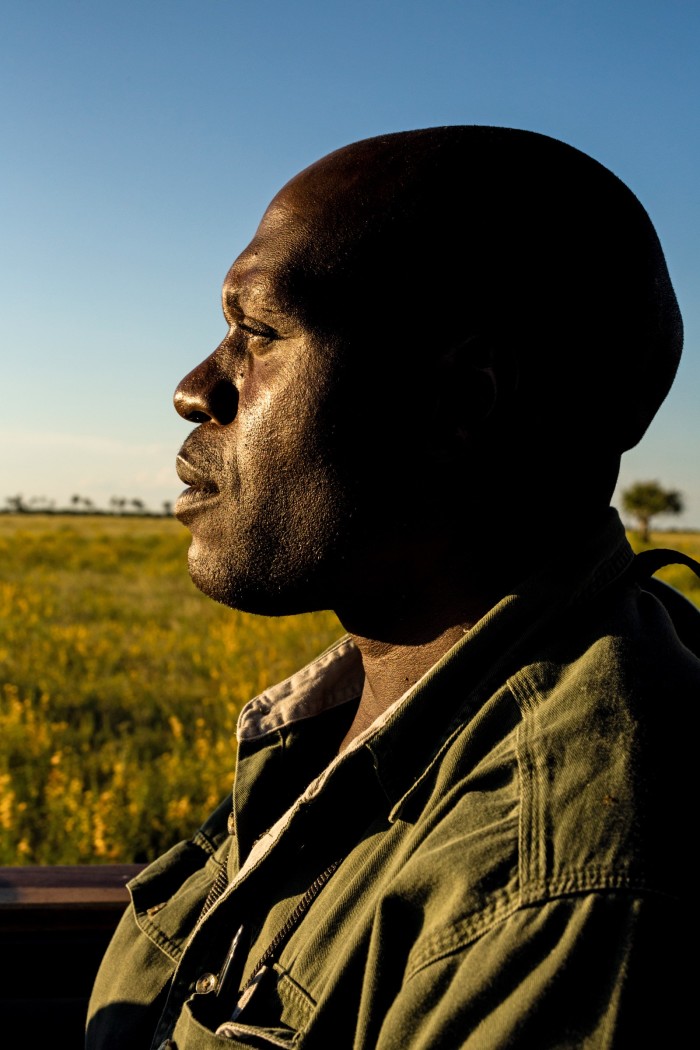
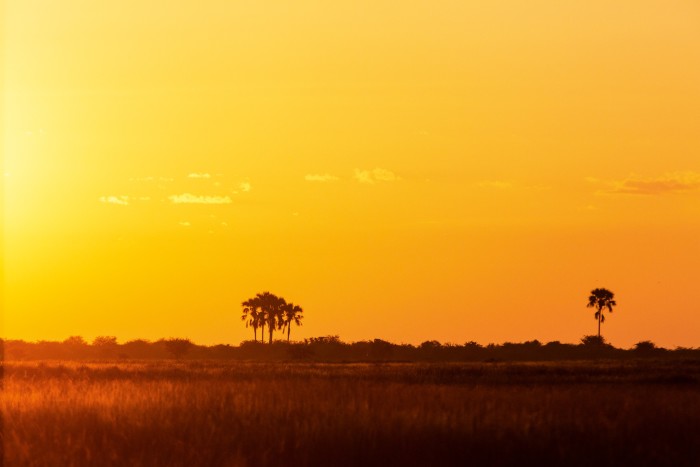
The Makgadikgadi was once a vast prehistoric inland sea. The grasslands surrounding it are the centre of evolution for an incredible diversity of species – including our own: the Kalahari is home to the oldest culture on earth, the Khoisan. A people who stayed behind following the African diaspora; a people with a depth of knowledge accumulated over tens of thousands of years. Jack had immense respect for the Khoisan, sending a six-year-old Ralph on walkabout with them, jump-starting his inexhaustible curiosity about how the earth works. Ralph’s own breadth of knowledge is beyond encyclopedic, and he uses it to weave an astonishingly visual narrative of everything around him. This has filtered through the camp. Forget cookie-cutter guiding – 6ft 6in Super, with his sly humour and eye-watering advice for treatment of a black mamba bite, is one of a tight team of locals who have come up through the company and found entrepreneurial opportunity within it.
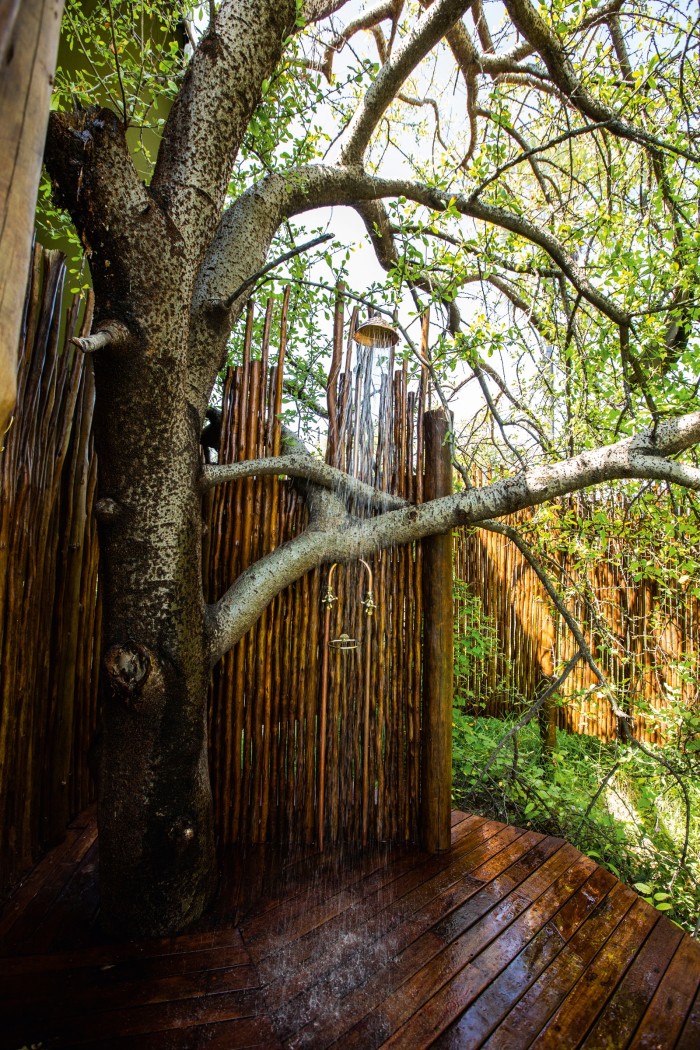
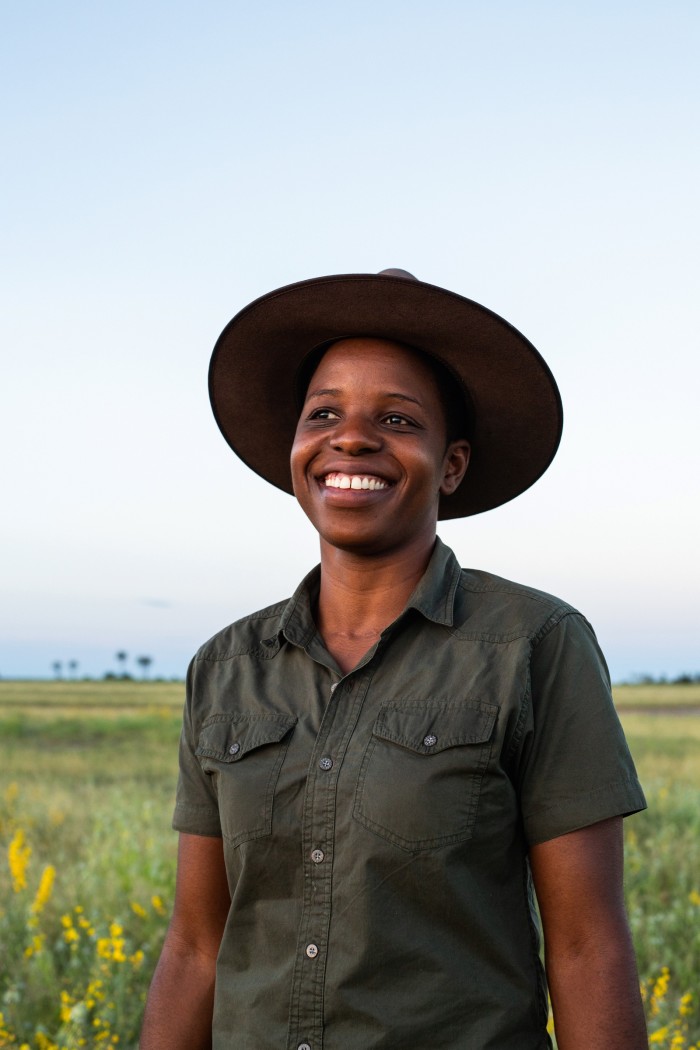
A generous per cent of Natural Selection’s gross turnover goes to conservation and community projects. It’s one thing to educate the kids, but lack of industry results in exodus. NS funds the development of local businesses such as farming and bakeries, then buys back the end products, creating a neat circular economy. To work in any far-flung place is to wrestle with the paradox of tourism/conservation. “If a father has got a kid who’s sick and hungry, they will kill an animal,” Bousfield says. “It’s not poaching, it’s not wrong. It’s human nature.” In Mapula, the sister property in the Okavango Delta, camp funds help resolve territorial disputes between animal and man. Villagers, for instance, have historically been forced to protect their cattle by burning the tall grasses where predators hide. Jack’s has leased a communal grazing area and hired people to protect it. Instead of being razed to the ground, the grasses get nutrients from the cow waste, Jack’s kitchen gets premium beef and the lion and leopard are spared.
There is, thank God, no animal bingo here. No fatuous box-ticking of the Big Five. Instead, take any creature – the zebra, why not – and you will soon know its mating habits, evolutionary history, breeding pattern, enemies and precise place in the ecosystem. After a while I was no longer watching a herd but a collective of individual families on a pilgrimage. A mother imprinting her stripe pattern on her foal. A patriarch’s three wives trotting in the strict hierarchical order of when they were added to his harem.
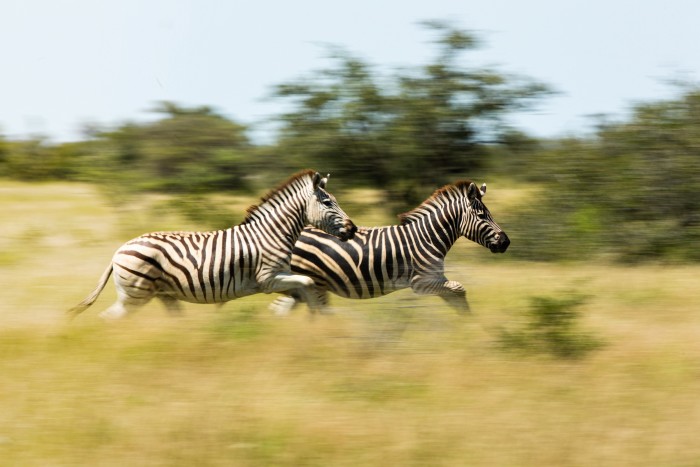
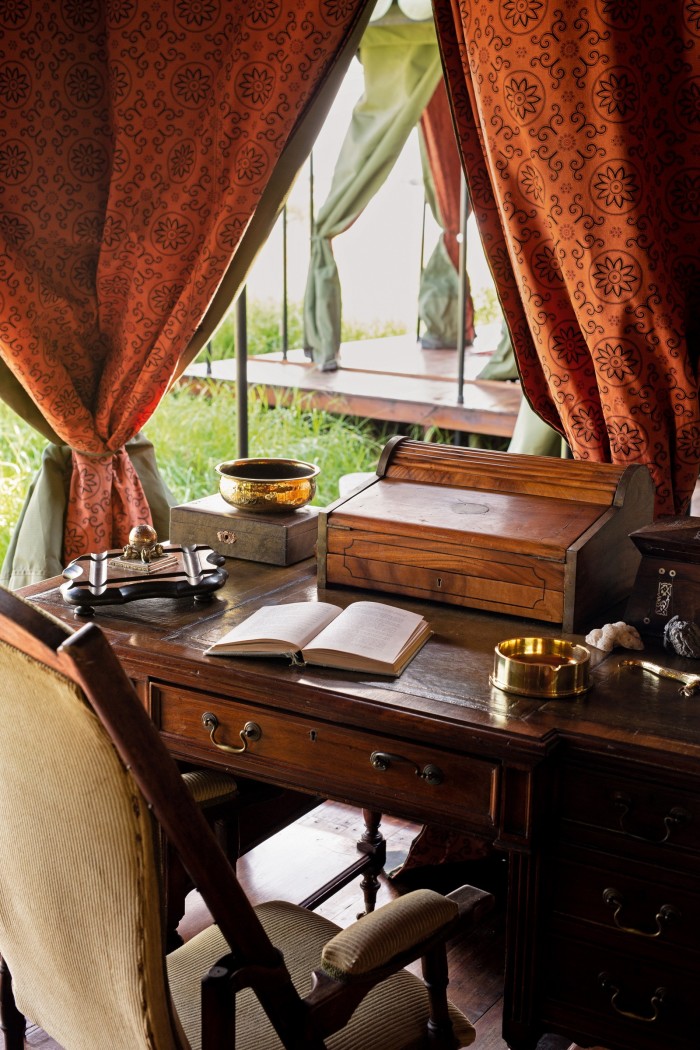
And thus the days pass. We eat delicious food; sleep delicious sleep. We play with the meerkats, who, in between tearing into fresh frogs, make use of our shoulders and heads to spot danger. We drive around looking for Super’s mystical black-maned lion and come across a cheetah instead. We walk with the 70-year-old-ish Cobra, one of 30 or so Khoisan on permanent staff. There isn’t a leaf he can’t identify, a toxin for which he doesn’t know the antidote. He whittles twigs and shows us how to make fire. He licks a scorpion clean so we can better see all eight of its eyes, while in the skies above a murmuration of black-winged pratincole swoop and pulse in perfect synchrony. To explore here is to move seamlessly between geography, history, archaeology, evolution. Actually, to explore here is to feel reassurance at the earth’s ability to regenerate. The world might be sick, but Nature sure knows what it’s doing.
Our last evening, we walk out across the salt pans. What a fierce and untamed place this is. How odd to think that humanity’s earliest footsteps could have been right here. How odd too to think we have co-evolved alongside the lion, the elephant and the strutty little warthog. If the wild beast is our enemy, it is also our comrade in arms. I crunch on over the dry clay until Jeep, fire, voices all recede. When I finally turn back there is nothing except my shadow cast under a big fat moon. I’m alone, but not lonely. In the years since my mother died, I’ve looked for her in many places. Africa is where I’ve found her. Not surprising, really. She was born and raised on this continent. And then, it is Eden. In our cells, deep in our bones, a little part of us will always belong here.
naturalselection.travel; Jack’s Camp, from $1,795 per person per night
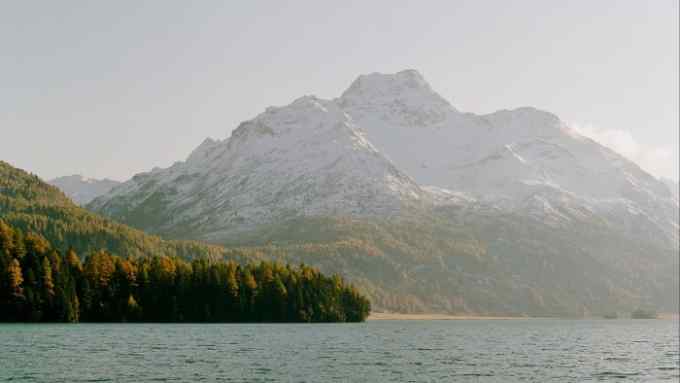
Comments